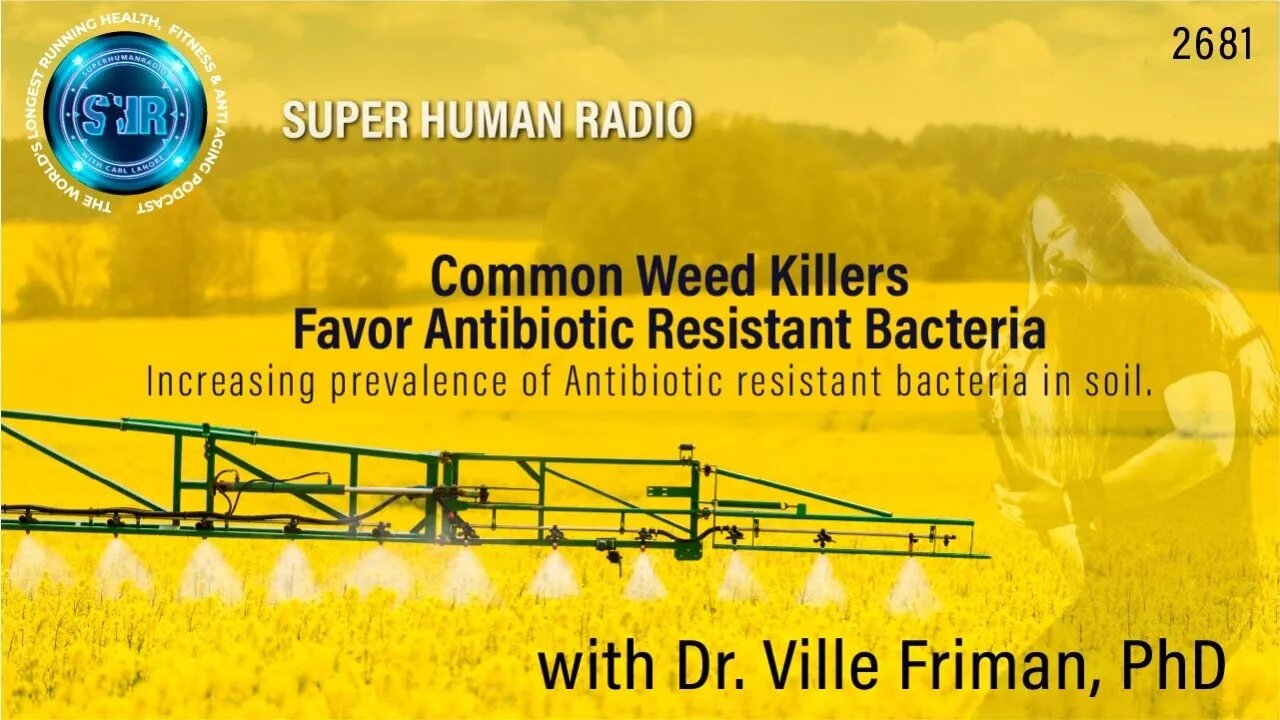Premium Only Content

How Weed Killers Create Antibiotic Resistant Bacteria
How Weed Killers Create Antibiotic Resistant Bacteria Guest: Dr. Ville Friman, PhD
Antibiotic resistance happens when germs like bacteria and fungi develop the ability to defeat the drugs designed to kill them. That means the germs are not killed and continue to grow. Antibiotic resistance is one of the biggest public health challenges of our time. Each year in the U.S., at least 2.8 million people get an antibiotic-resistant infection, and more than 35,000 people die. It was once thought that the increase in the rate of antibiotic resistance was due to the widespread overuse of antibiotics. That may not at all be the case.
A new study from the University of York shows the use of weed killers can increase the prevalence of antibiotic resistant bacteria in soil. Herbicides are one of the most widely used chemicals in agriculture and while these compounds are used to target weeds, they can cause damage to soil microbes, such as bacteria and fungi, potentially changing the ecological properties of microbial communities. Scientists from China and the UK studied the effect of three widely used herbicides called glyphosate, glufosinate and dicamba on soil bacterial communities.
-
 5:17
5:17
Super Human Radio Podcast
1 year agoAn Opportunity In Disguise
169 -
 33:14
33:14
Tudor Dixon
1 hour agoThe World Walk with Tom Turcich | The Tudor Dixon Podcast
1.4K -
 LIVE
LIVE
PudgeTV
7 hours ago🔴 Gaming on Rumble - Marvel Rivals | Iron Man's Armory: Equipping Groot and Jeff for Battle
336 watching -
 LIVE
LIVE
The Charlie Kirk Show
1 hour ago2024 In Review + The Truth About H-1Bs | Girdusky, Carl | 12.30.24
8,209 watching -
 6:51
6:51
The Rubin Report
1 hour agoDave Rubin Reacts to Trump’s Greatest Moments
17.5K4 -
 DVR
DVR
Bannons War Room
1 year agoWarRoom Live
102M -
 0:57
0:57
Steven Crowder
2 hours agoCROWDER CLASSICS: AOC & the Lion’s Den (Bible Story Parody)
75K7 -
 50:00
50:00
Graham Allen
5 hours agoGoodbye 2024…. HELLO 2025!!
66.1K16 -
 LIVE
LIVE
LFA TV
16 hours agoH1B FIASCO! | LIVE FROM AMERICA 12.30.24 11am EST
5,105 watching -
 2:05:37
2:05:37
Matt Kohrs
16 hours agoStocks Puke, Breaking News & BIG Updates || The MK Show
57.3K3